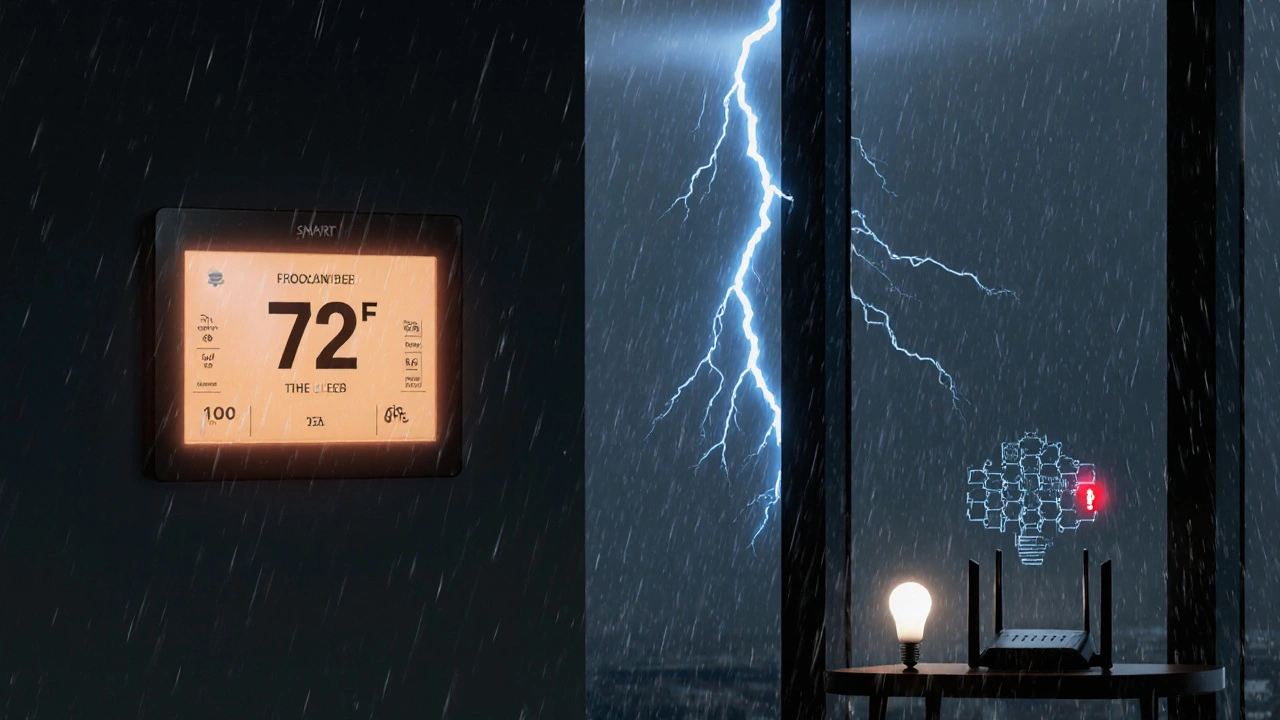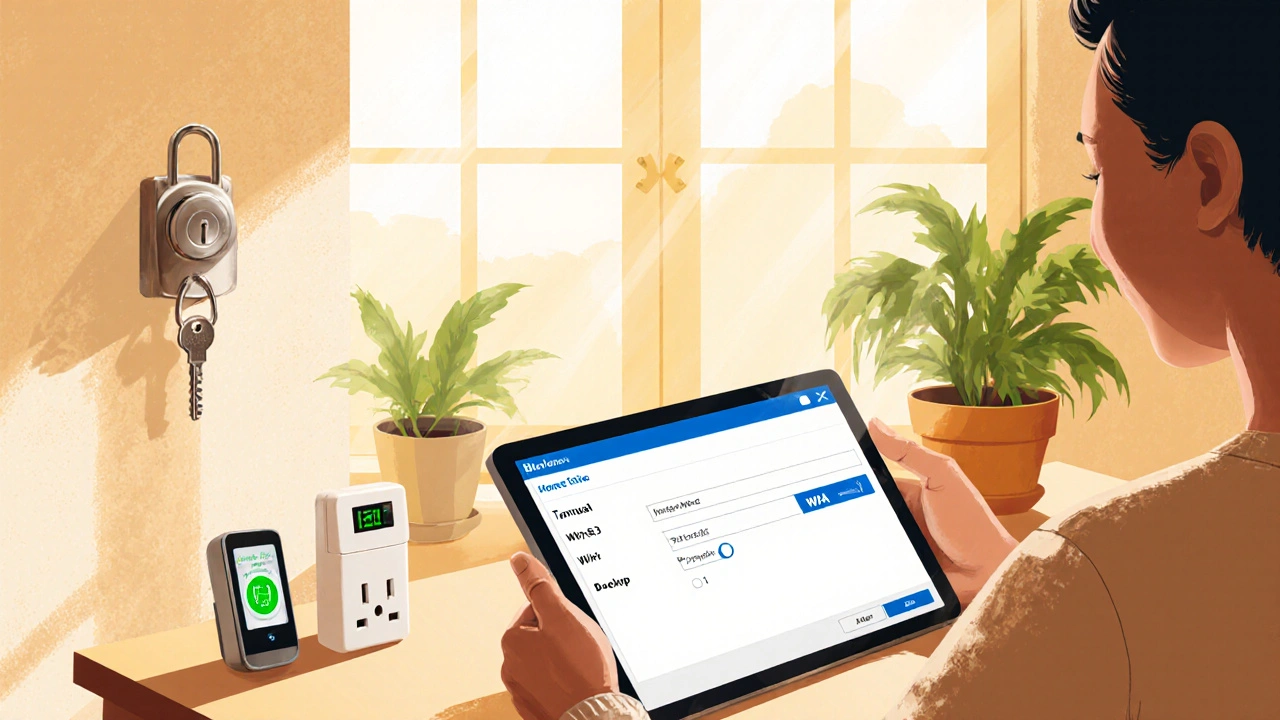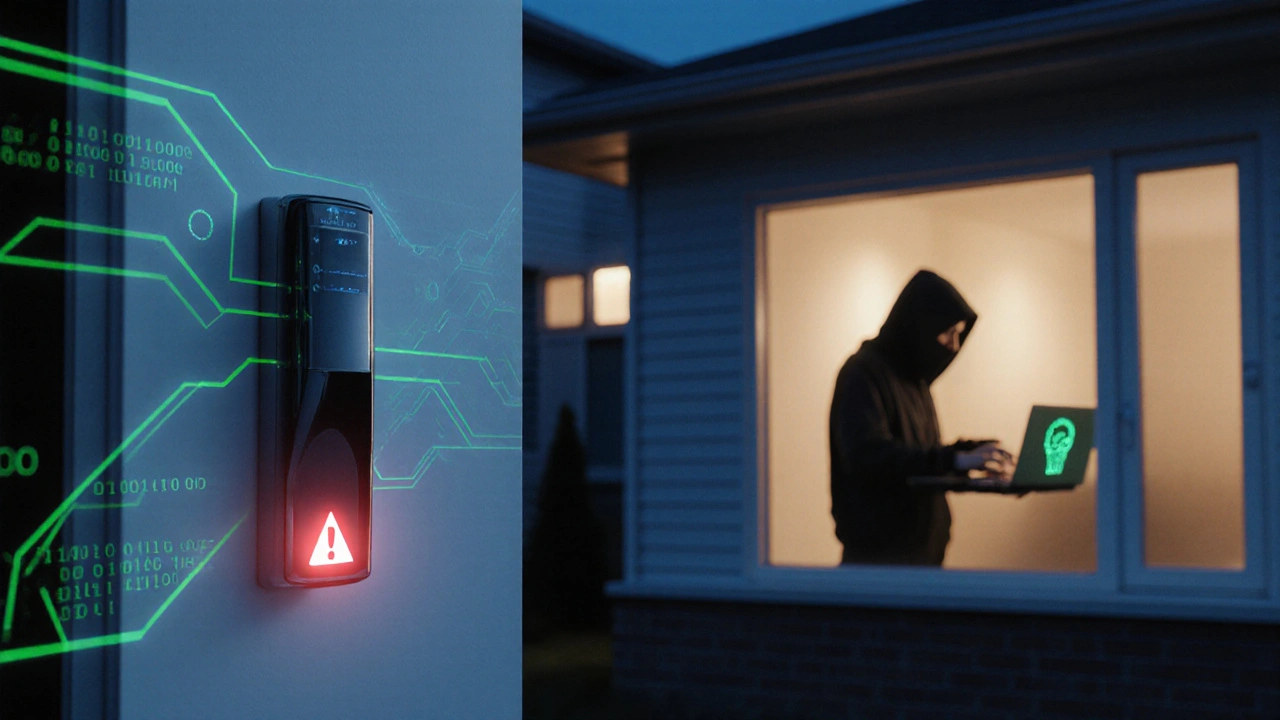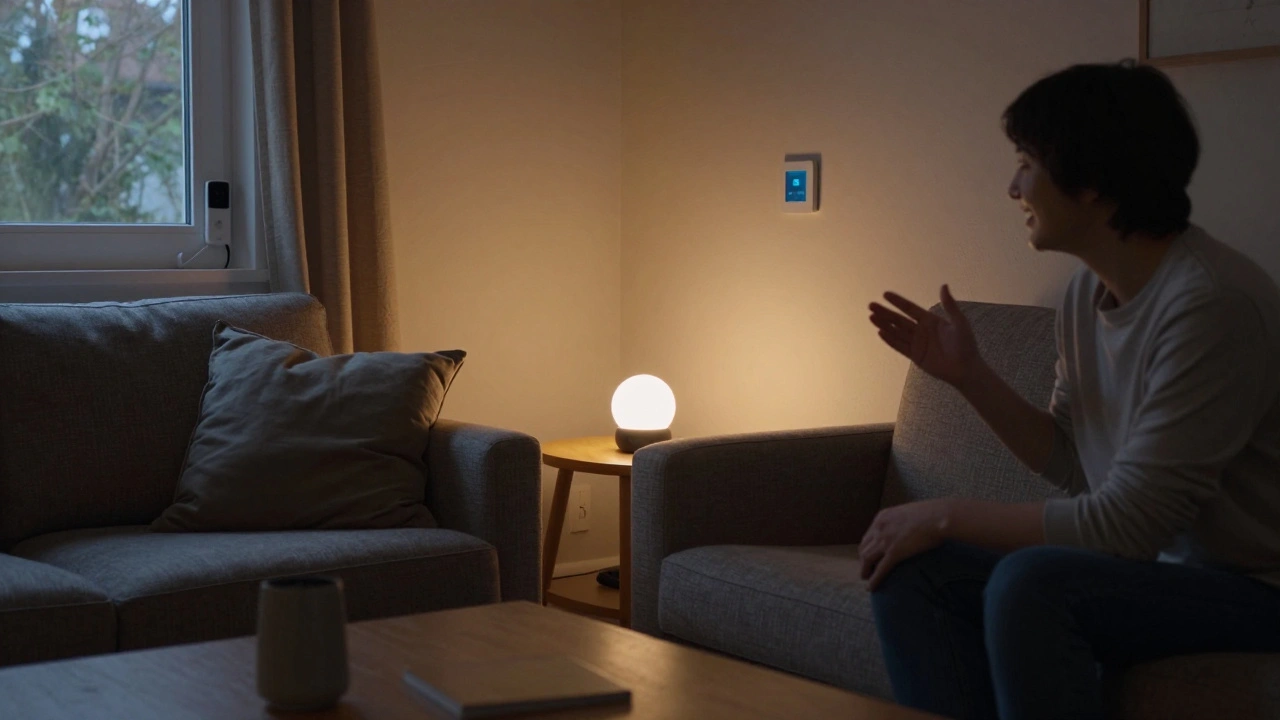Smart Home Cost Calculator
Estimate Your Smart Home Costs
Calculate upfront costs, recurring fees, and long-term expenses to understand the true value of smart home investments.
Total Cost Estimate
Total Cost
$0.00
Recommendation: Consider open-standards devices to reduce vendor lock-in costs. Many users save $200+ by avoiding proprietary ecosystems over 5 years.
Choose devices with local processing to avoid cloud subscription fees that can exceed $100/year.
Important note: Your energy savings may be offset by constant power draw from hubs and sensors. A single smart hub uses about 5W continuously.
The article warns that security vulnerabilities could lead to costly breaches or device replacement.
When you hear "smart home," you probably picture lights that turn on with a voice command and a thermostat that learns your schedule. But before you dive head‑first into automation, it helps to understand the smart home disadvantages that can catch you off guard.
Key takeaways:
- Security gaps can expose personal data and even let intruders control devices.
- Frequent software updates and network hiccups may disrupt everyday tasks.
- Initial costs, ongoing subscriptions, and vendor lock‑in add up quickly.
- Complex setups can frustrate non‑tech‑savvy users.
- Energy‑hungry gadgets may offset expected savings.
Security and Privacy Risks
Smart homes rely on the Internet of Things (a network of connected devices that share data over the internet). Every sensor, camera, and lock becomes a potential entry point for hackers. A 2024 breach of a popular smart lock brand exposed millions of usernames and passwords, allowing attackers to unlock doors remotely.
Privacy issues go beyond hacking. Many voice assistants store recordings to improve accuracy, creating a detailed log of your daily routines. If a company mishandles that data, you could face targeted advertising or even legal complications.
Reliability and Network Dependence
Without a stable Wi‑Fi or Zigbee (a low‑power, mesh networking protocol for IoT devices) mesh, many smart devices simply stop working. In my own condo, a router reboot during a storm left the smart thermostat stuck at 72°F for hours-no one could adjust it until the internet returned.
Additionally, firmware updates meant to patch vulnerabilities can introduce bugs. A 2023 update to a leading smart lighting system caused flickering and blackouts in hundreds of homes, forcing users to roll back the firmware manually.

Cost and Vendor Lock‑In
Aside from the sticker price of hubs, sensors, and smart appliances, you often pay recurring fees for cloud storage, premium voice services, or remote monitoring. A basic smart security package can start at $199, but annual subscription fees for video storage can exceed $120.
Vendor lock‑in is a hidden cost. Many ecosystems - for example, Apple HomeKit (Apple’s proprietary smart‑home platform) - only work with certified accessories. If you later decide to switch to a different platform, you may have to replace a whole set of devices.
Complexity and Usability
Setting up multiple devices, creating scenes, and linking them across platforms can be daunting. Users often report "automation fatigue" after spending hours configuring routines that never fire correctly.
For older adults or those uncomfortable with tech, the learning curve can lead to abandonment. A 2022 survey of senior homeowners found that 42% of respondents discontinued using smart thermostats because the app interface was too confusing.
Energy Consumption and Environmental Impact
While smart thermostats promise energy savings, the cumulative power draw of always‑on hubs, sensors, and routers can offset those gains. A typical smart hub consumes around 5watts continuously, translating to roughly 44kWh per year-enough to power a small LED TV.
Furthermore, the rapid turnover of IoT gadgets contributes to electronic waste. Many devices are not designed for easy repair or recycling, leading to an increase in landfill volume.

Summary of Major Disadvantages
| Disadvantage | Typical Impact | Mitigation Strategy |
|---|---|---|
| Security vulnerabilities | Unauthorized access, data leaks | Use strong, unique passwords; enable two‑factor authentication; keep firmware up to date |
| Privacy concerns | Personal habits tracked, targeted ads | Review privacy settings; limit cloud storage; choose devices with local processing |
| Network outages | Loss of control over lights, locks, etc. | Implement a mesh network; keep a backup Ethernet connection; use devices with local fallback mode |
| High upfront &ongoing costs | Budget strain, hidden subscription fees | Start with a small core system; compare annual total cost of ownership before buying |
| Vendor lock‑in | Limited future flexibility | Prefer open standards like Z‑Wave (another interoperable IoT protocol); avoid proprietary ecosystems when possible |
| Complex setup | Time‑consuming, user frustration | Use step‑by‑step guides; hire a certified installer for large projects |
| Energy use of always‑on devices | Higher electricity bills, environmental impact | Choose low‑power hubs; unplug devices you don’t use regularly |
Practical Tips to Reduce the Downsides
- Secure your network first. Change default router passwords, enable WPA3 encryption, and segment IoT devices on a separate VLAN.
- Audit permissions. Disable cloud syncing for cameras if you only need local storage.
- Plan for redundancy. Keep a manual key for smart locks and a traditional thermostat as backup.
- Start small. Begin with one or two high‑impact devices-like a smart thermostat and a door sensor-then expand based on real benefits.
- Choose open‑source or open‑standard devices. Products that support Matter (the unified smart‑home standard backed by major tech companies) are more likely to stay compatible over time.
- Schedule regular updates. Allocate a monthly 15‑minute window to check firmware and app versions.
- Monitor energy usage. Use a smart plug with power‑monitoring to see which hubs draw the most electricity.
Frequently Asked Questions
Can a smart home be 100% secure?
Absolute security is unrealistic. However, using strong passwords, two‑factor authentication, and keeping firmware current can reduce risk dramatically.
Do smart home devices really save money on energy bills?
They can, especially smart thermostats that adjust heating/cooling based on occupancy. But the savings may be offset by the constant power draw of hubs and the cost of higher‑rate electricity in some regions.
What’s the biggest privacy concern with voice assistants?
Voice assistants often store recordings to improve speech recognition. If those files are accessed by unauthorized parties, they can reveal intimate details about daily routines and personal preferences.
Is it worth investing in a smart home now, or should I wait for newer tech?
If you have specific needs-like remote monitoring for a pet or energy tracking-a small starter kit can be valuable today. For broader automation, waiting a year may bring more mature standards (like Matter) and cheaper devices.
How can I avoid vendor lock‑in?
Focus on products that support open protocols such as Zigbee, Z‑Wave, or Matter. Avoid ecosystems that only work with a single brand’s hub or app.


